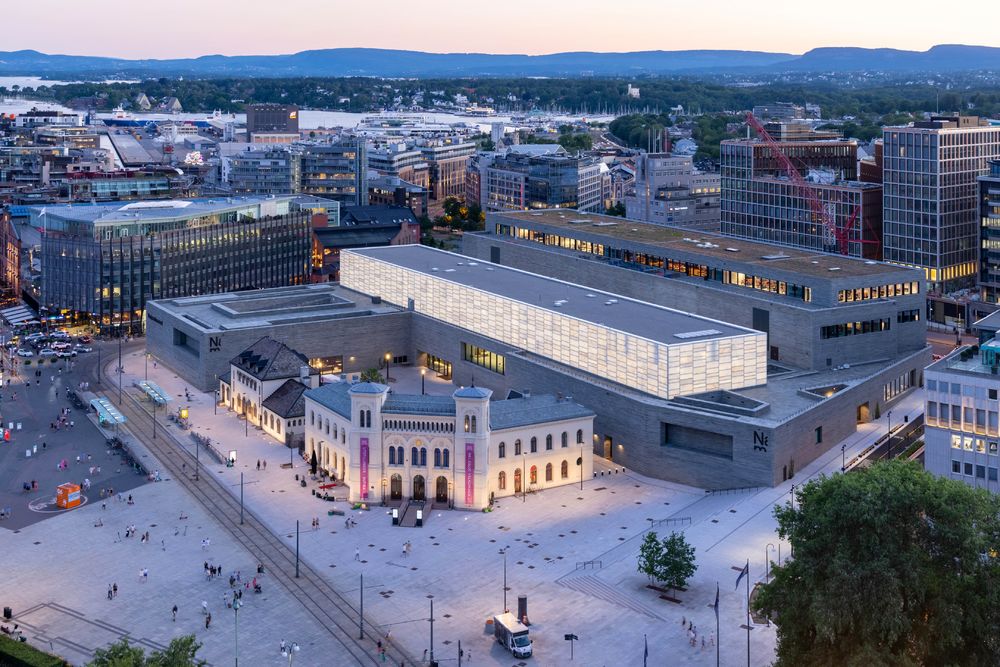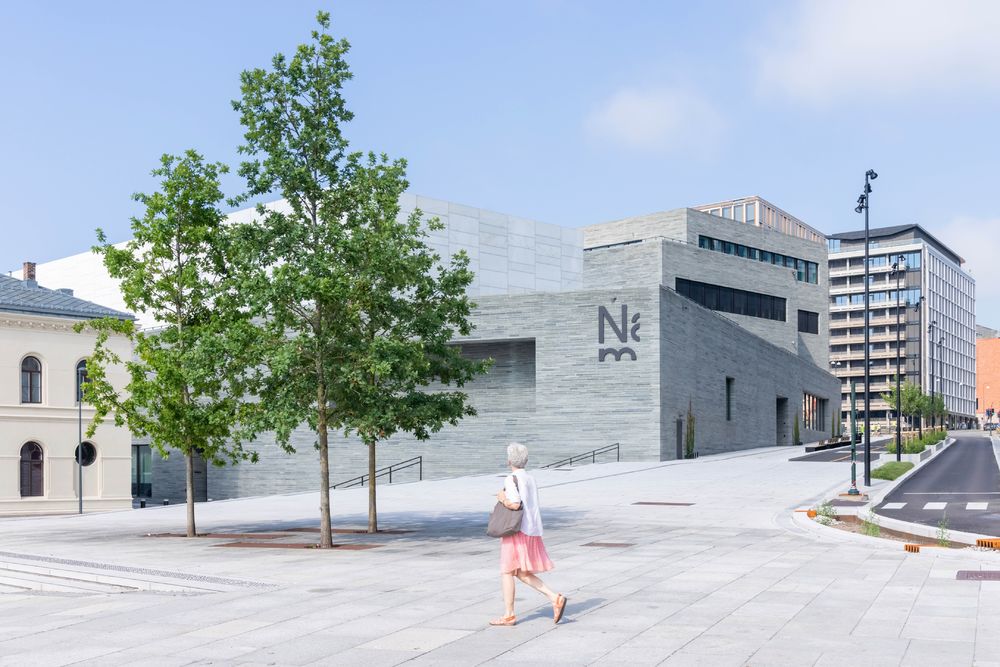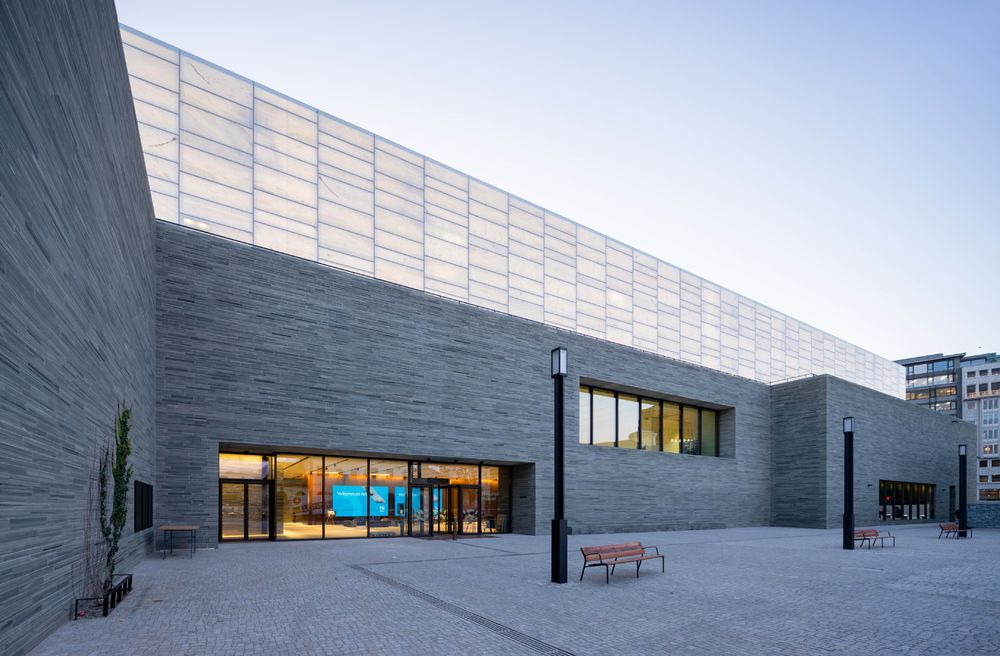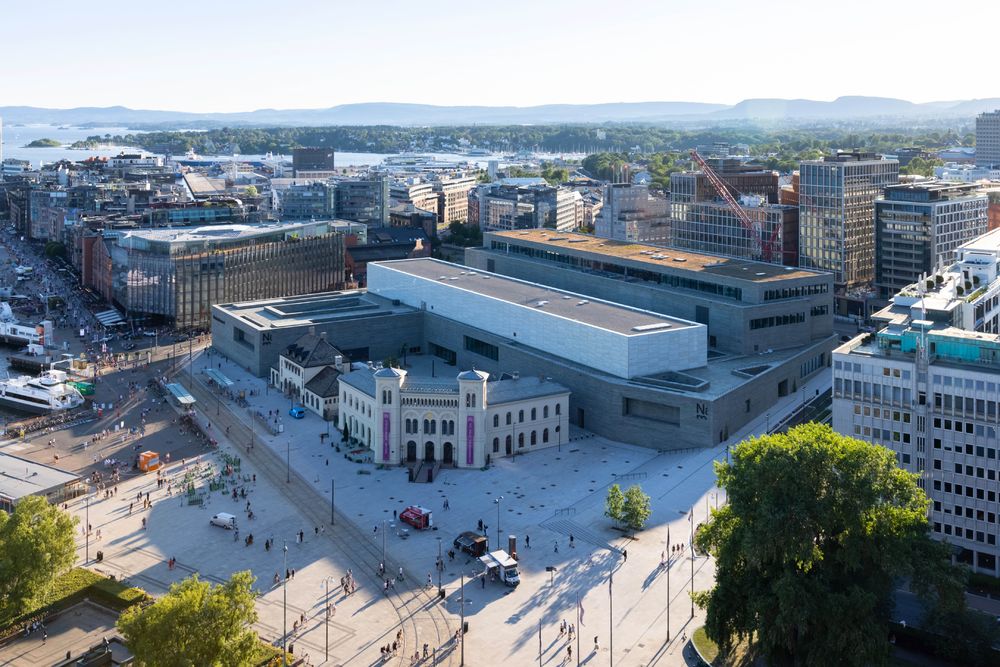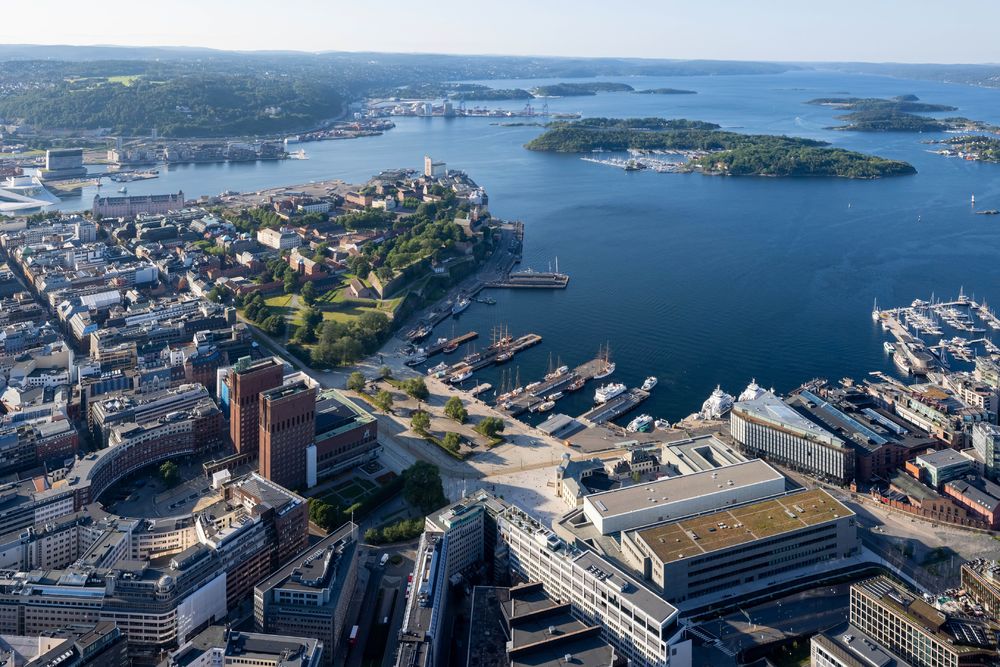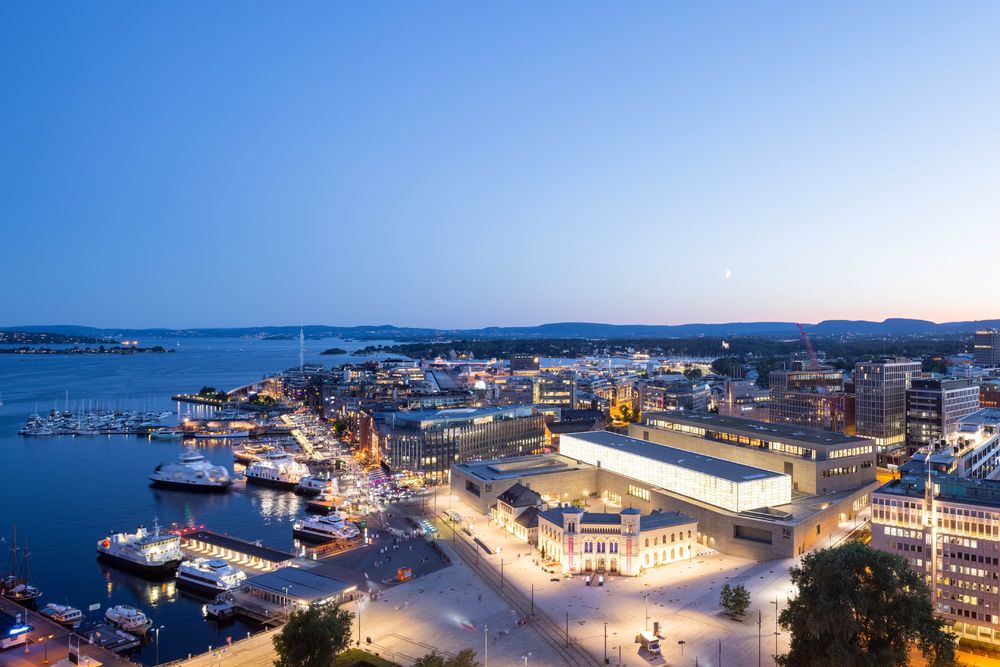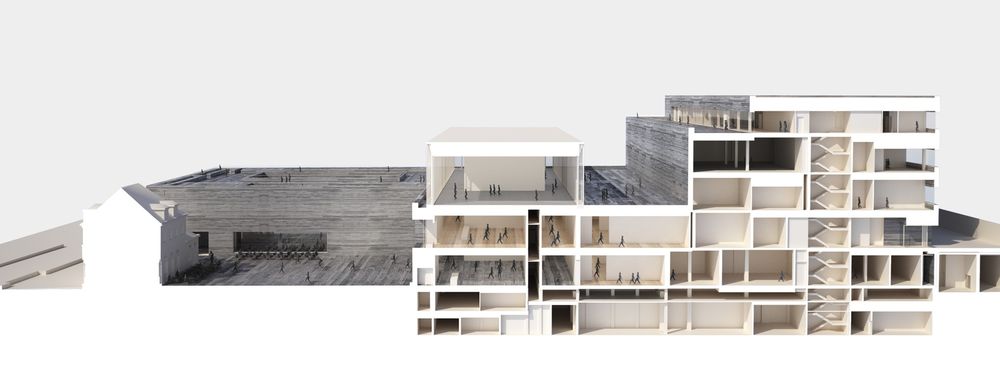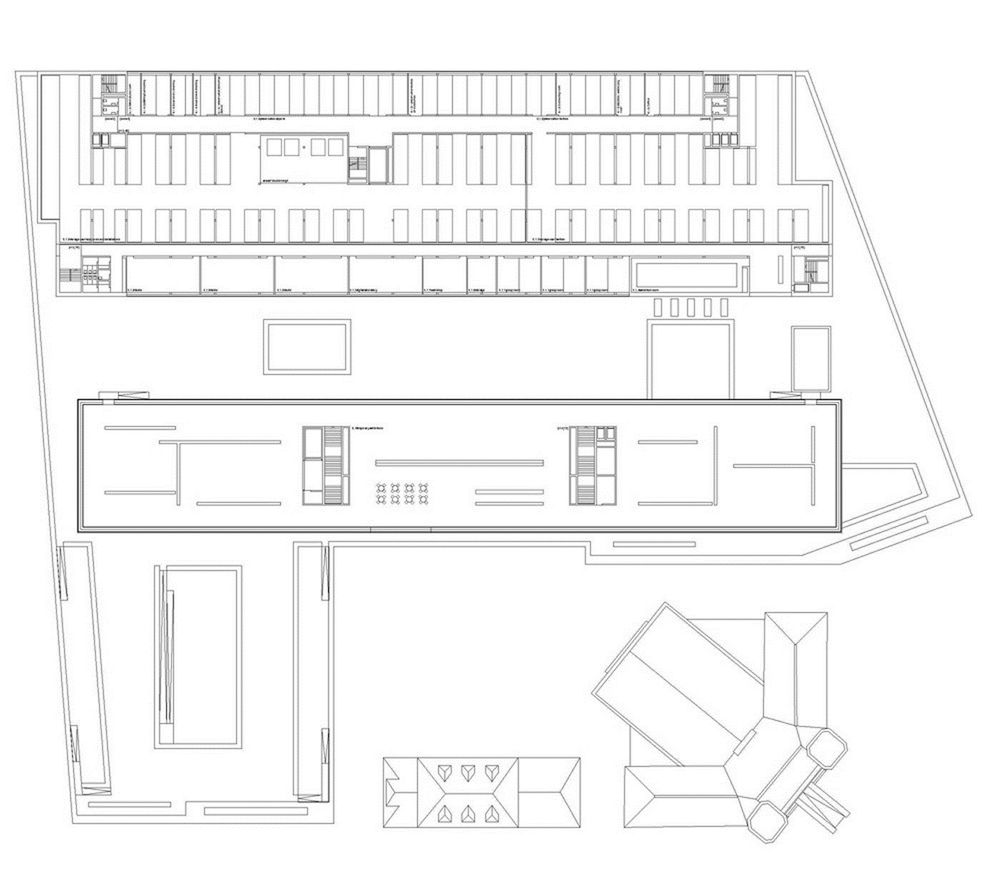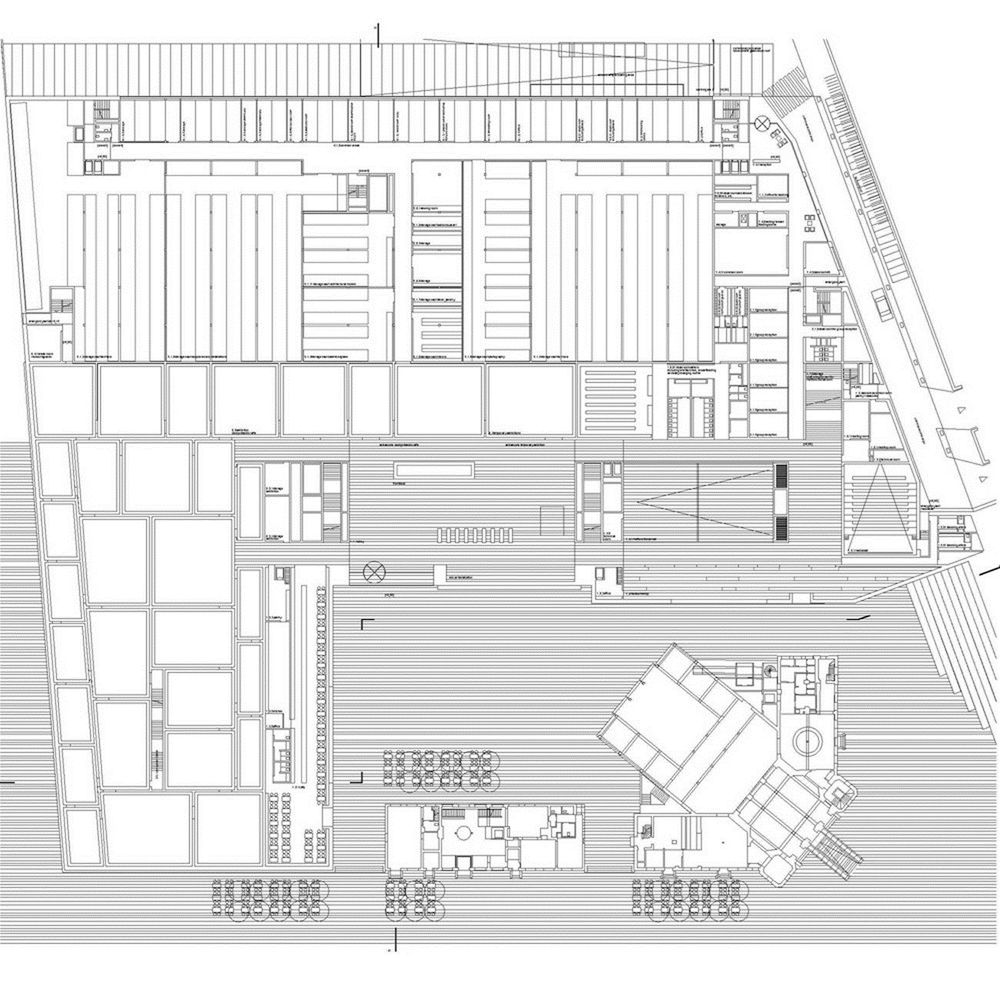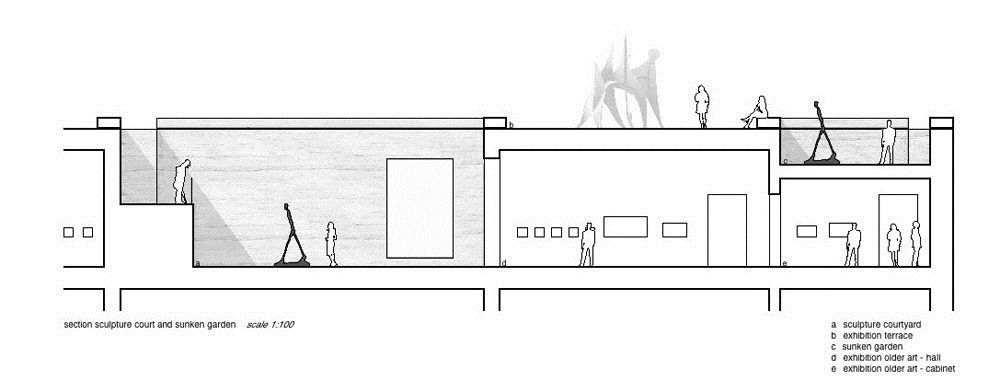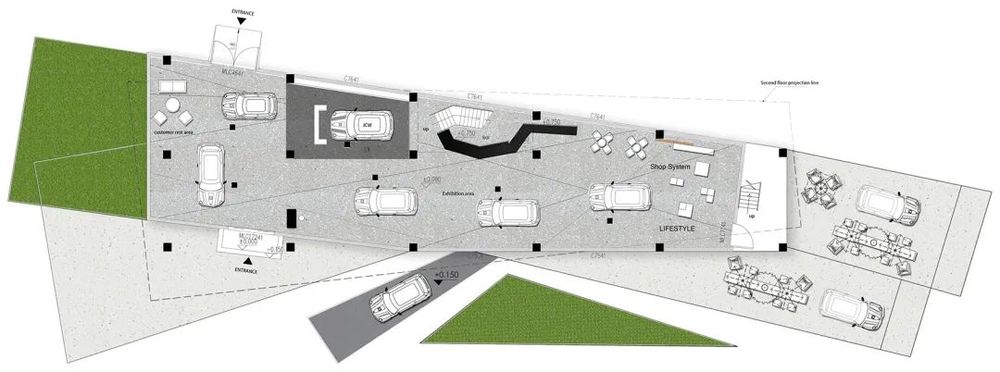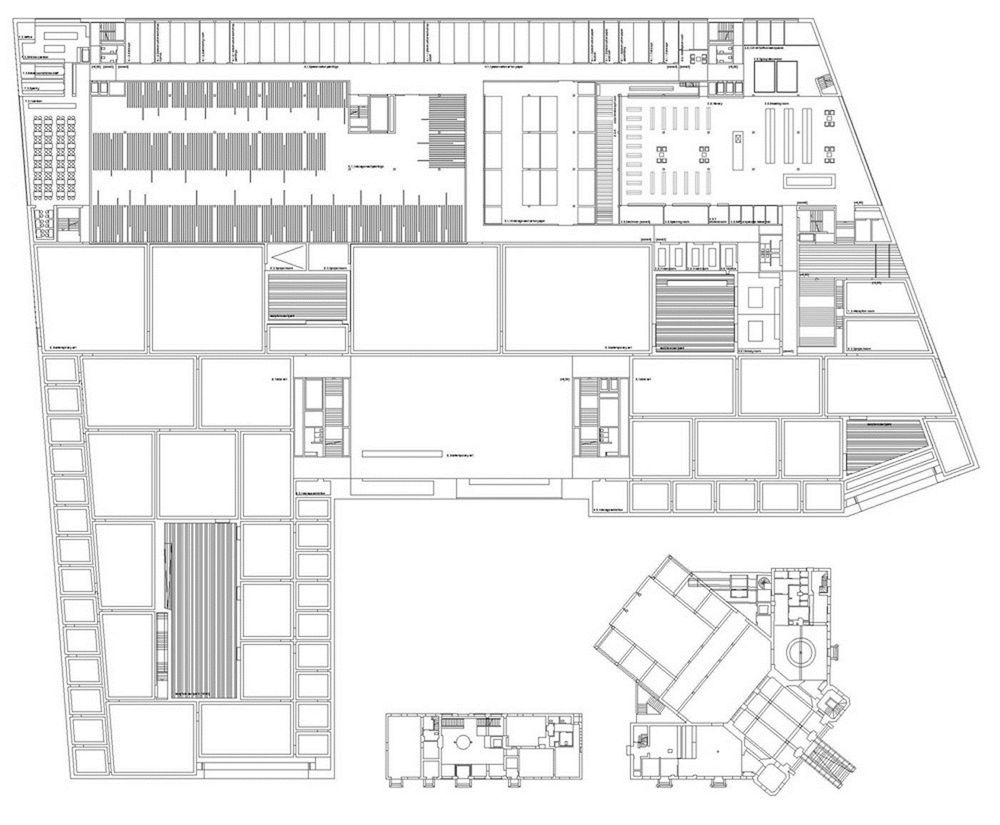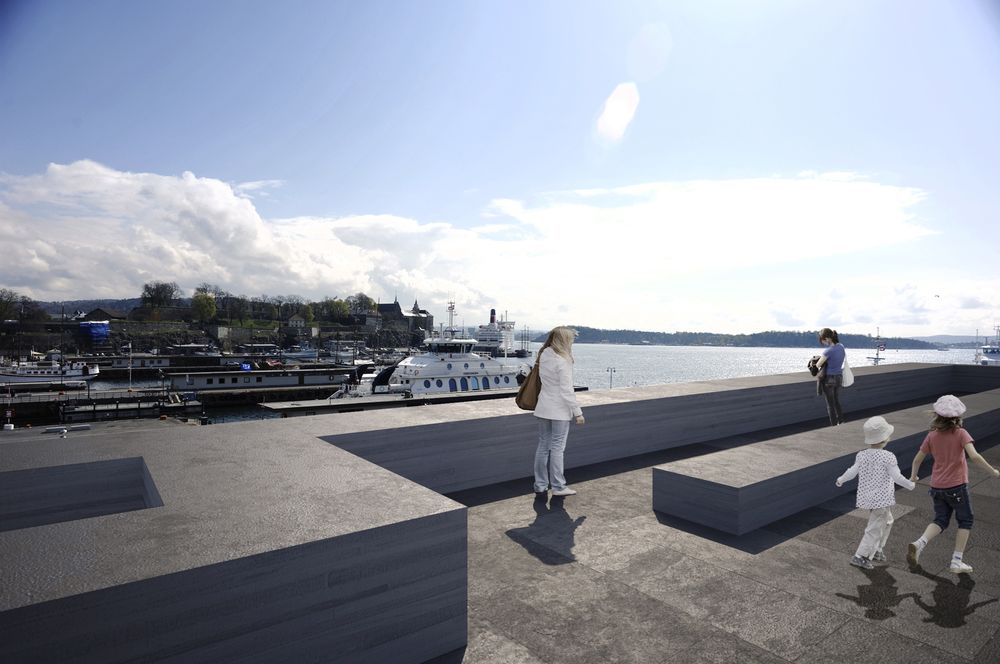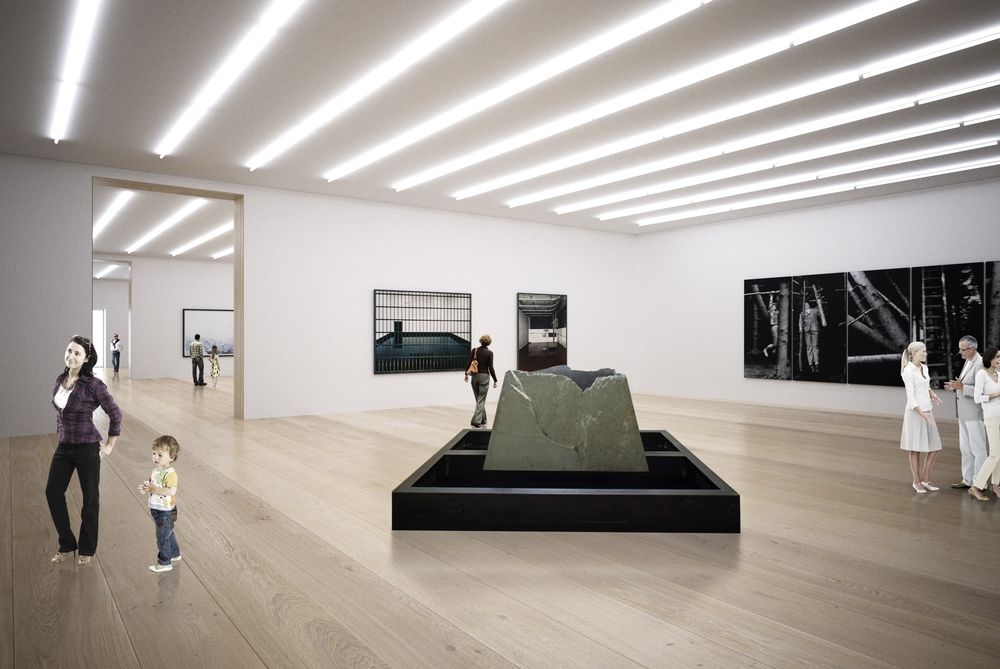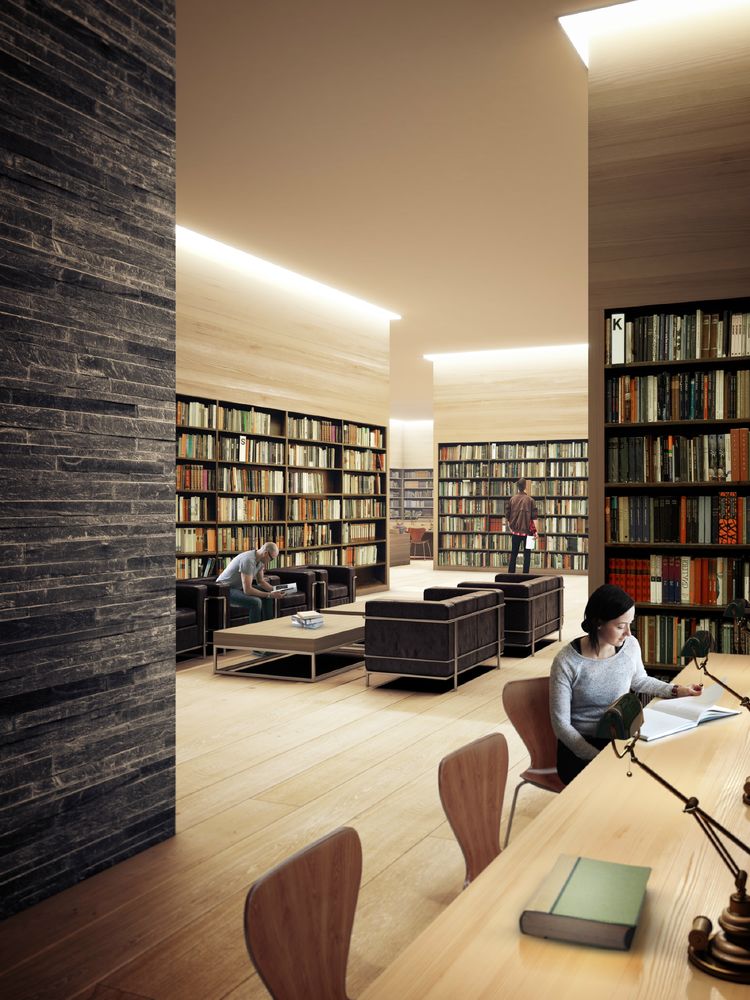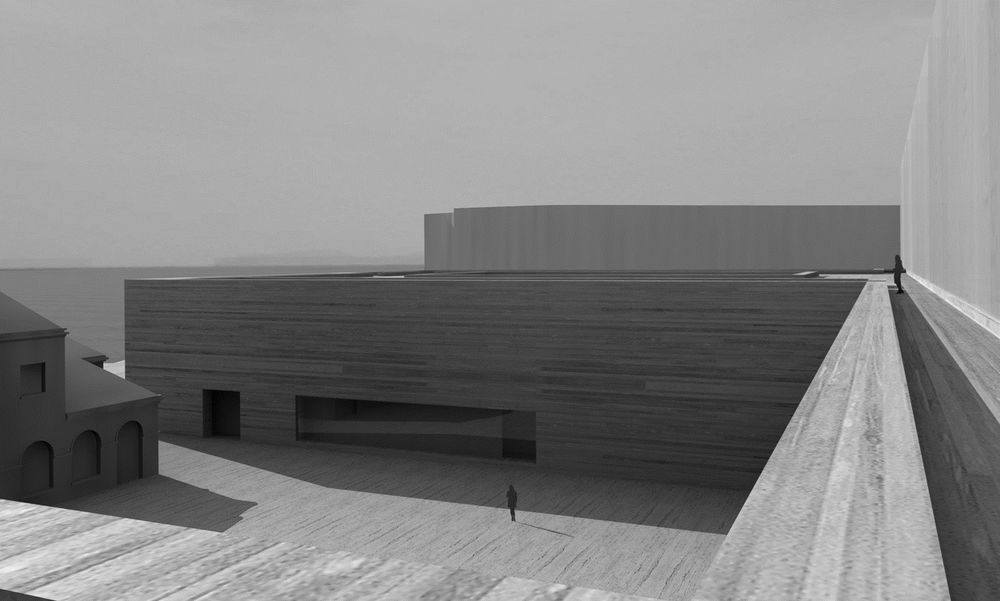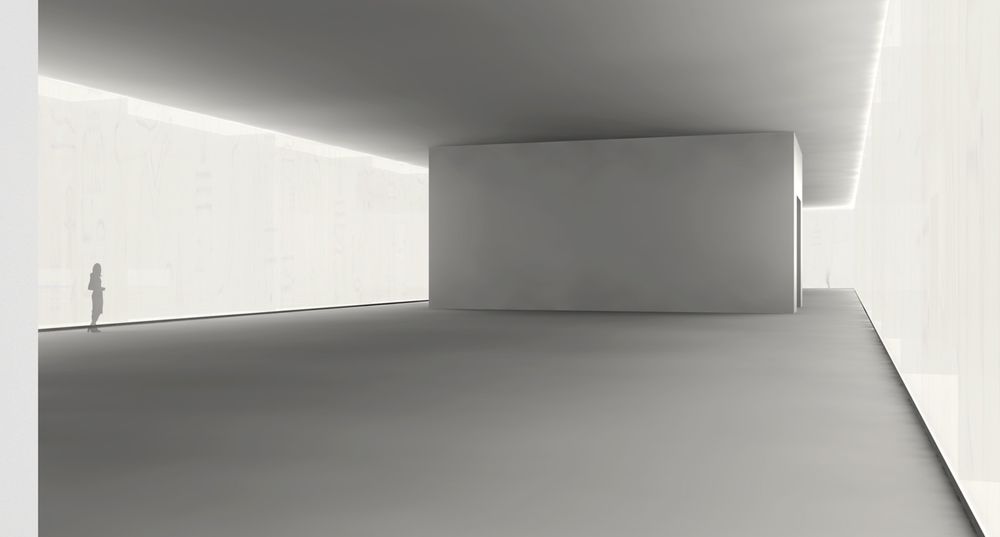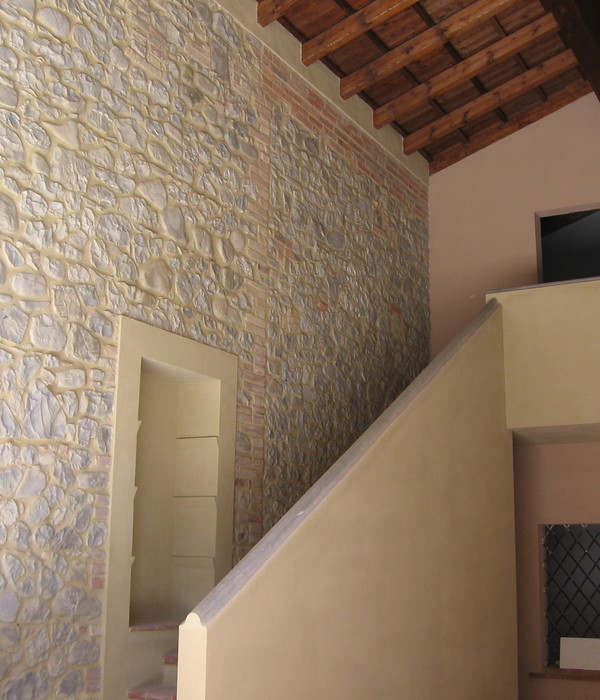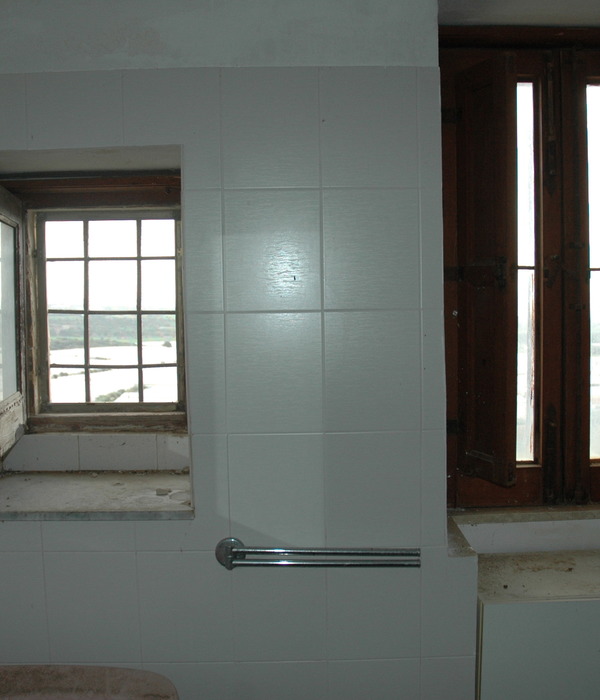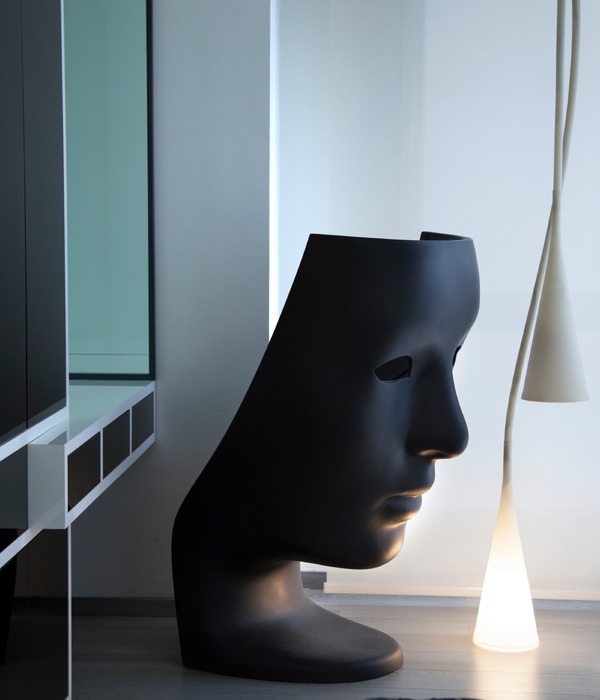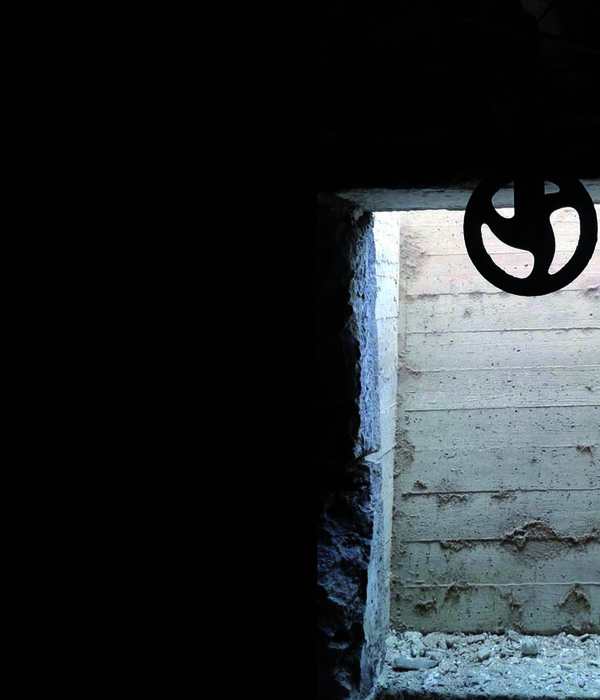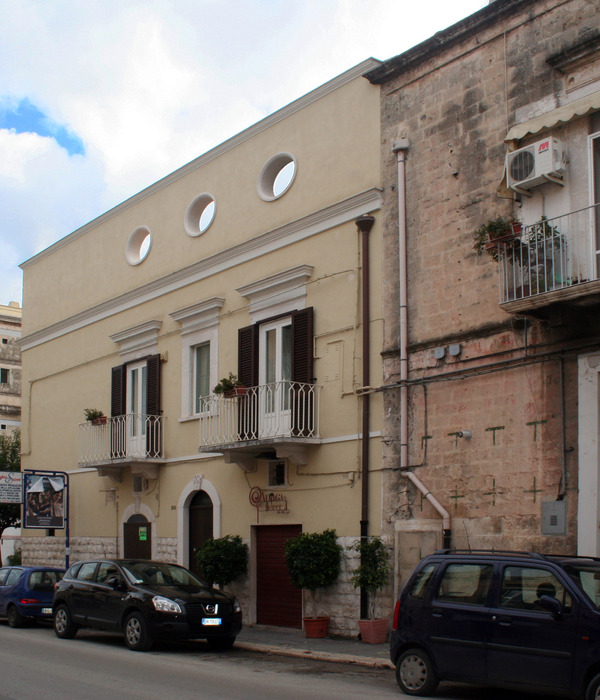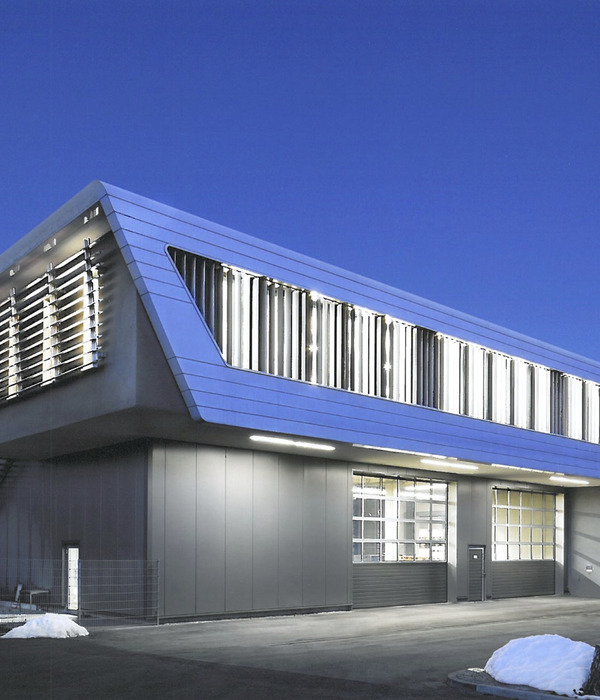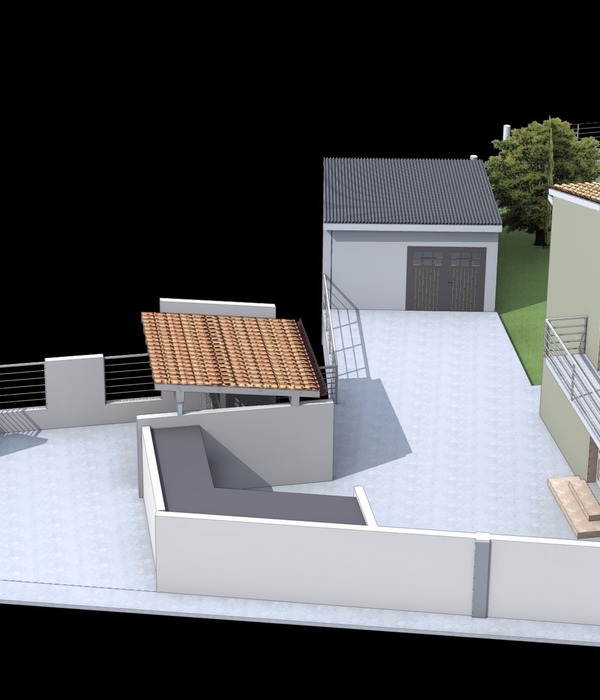国家艺术建筑博物馆 | 现代与传统交融的设计典范
• Established in 2003-2005 with the merger of The National Gallery, The Museum of Arts and Crafts, the Museum of Architecture, The Museum of Contemporary Art, and the state program for travelling exhibitions, Riksutstillinger.
• The oldest of these institutions, the National Gallery, dates back to 1836.
• For the first time, works from all the different fields of the Museum’s collection will be housed
and exhibited in the same building.
• The National Museum – Architecture remains a venue for permanent and temporary
exhibitions.
• Director, Karin Hindsbo.
• Total area: 54,600 square metre.
• Total cost: NOK 6,1 billion.
• Designed with the perspective of housing artworks for centuries, the museum is built with clean and robust natural materials that will age with dignity, like oak, bronze and marble. The entire façade is covered with Norwegian slate.
• Using available resources carefully is a fundamental principle for the new museum, and environmental ambitions are high. As a FutureBuilt pilot project, the museum is designed to reduce greenhouse gas emissions by at least 50% compared to today’s building standard. This is achieved in part through a compact building structure, use of sea water and district heating for required climate control, and use of low carbon cement and recycled steel.
• On top of the building is the Light Hall, a 2,400 square metre hall for temporary exhibitions. The Light Hall is covered with glass and an outer semi-transparent thin sheet of marble, creating a soft interior light. The façade of the 130 metres long hall will be illuminated from within and is set to become a stunning element in the city’s landscape in the evening. The hall is flexible and can either be used in its entirety or be divided into two or three large rooms.
• The museum has a large roof terrace with a panorama view of the city, overlooking the Oslo fjord and the Akershus fortress.
• Situated near the City Hall on Oslo’s waterfront. The site of the new museum was once one of the city’s main train stations. The old station buildings are listed, and the space between the old 19th Century buildings and the new museum creates a new courtyard which will be accessible for the public. The courtyard will have outdoor seating for the restaurant and will also be used for programming events.
• 13,000 square metres – more than 90 rooms – dedicated to exhibitions.
• A permanent display of almost 90 rooms.
• A public art library – the largest of its kind in the Nordic region
• Five workshops for educational purposes.
• State-of-the-art conservation labs and in-house art storage.
• A large auditorium and cinema.
• A restaurant concept by Dugurd facing the courtyard, offering affordable high-quality seasonal and sustainable local produce.
• The National Museum’s collection consists of around 400,000 objects.
• A world class collection of Norwegian and international works from all the Museum’s areas:
older, modern and contemporary art, design and crafts, and architecture.
• A permanent display of the collection that spans two floors and almost 90 rooms will show
more than 5,000 works from the antiquity to the Museum’s most recent contemporary acquisitions. Here, works from all the National Museum’s various fields – older and modern art, architecture, design, craft, and contemporary art – will meet and interact in new contexts. The permanent display will show the exchange of ideas between the various disciplines, and between Norway and other countries and cultures.
• The permanent display is organized by chronology, but with occasional thematical rooms where works from across different eras will meet in surprising juxtapositions. Visitors may also choose alternative routes across the exhibition and jump from one era or genre into another.
• The permanent exhibition of design and crafts will be on the first floor, and the fine art exhibition will be on the second floor.
• The collection contains key works by Norwegian artists such as Harald Sohlberg, Hannah Ryggen, Johan Christian Dahl and Harriet Backer. The museum holds many of the most well- known and iconic paintings by Edvard Munch, which will be exhibited in a dedicated room in the permanent exhibition.
• The National Museum collection also has important works by Lucas Cranach the elder, Caspar David Friedrich, Gustave Courbet, Édouard Manet, Berthe Morisot, Pablo Picasso, Georges Braque, and Louise Bourgeois.
• The comprehensive design collection contains everything from royal dresses to the icons of mid-twentieth century Scandinavian design.
• The Museum will also house an exhibition space dedicated to the National Museum’s world class collection of graphic works, as well as study rooms where visitors can view paper works by the likes of Albrecht Dürer, Edvard Munch and Pablo Picasso on demand.
• The first exhibition in the Light Hall will be an extensive presentation of contemporary art in Norway. The curators have travelled the whole length of the country in order to survey the Norwegian art scene and have met with several hundred artists. With a special focus on artists who are working on the margins of the art scene, the project is an inquiry into what Norwegian art and Norwegian society is at this exact moment.
The Museum also opens with a special exhibition of works in a collection built in collaboration between the Fredriksen Family and the National Museum. The collection will be exhibited in a dedicated room on a permanent basis and contains significant works by internationally renowned artists such as Cecily Brown, Marlene Dumas, Philip Guston, Eva Hesse, Kerry James Marshall, Yayoi Kusama, Lynette Yiadom-Boakye, Julie Mehretu and Bruce Nauman.
Along with the new National Museum, in 2022 Oslo will have seen the openings of other notable architectural landmarks, such as the new Public Library and the new Munch Museum. The city has a thriving art gallery scene and a number of internationally renowned designers and architects. With the opening of the new National Museum, Oslo and Norway will become an essential destination for anyone interested in art and culture.
[IT] Tiberio fece realizzare 12 ville sull'isola di Capri in modo che dall’una si potesse ammirare l’altra, Platone definì la bellezza come rapporto, proporzione. Secondo il filosofo greco un oggetto è bello se può entrare in rapporto con noi ed il mondo se questo non dovesse accadere l’oggetto non possiede bellezza. Il progetto del Museo nasce dalla volontà di non poter prescindere dalla presenza dell’edificio del municipio e dalla fortezza cercando quindi di instaurare in “dialogo” con queste due presenze. La forte visibilità che essi hanno dal mare ha suggerito la volontà di creare un altro polo che potesse richiamare l’attenzione. Il forum artis, che chiude il fronte sud della piazza che si viene a formare tra il municipio a la fortezza, con la sua luminosa sala di alabastro diventa faro e quindi punto di riferimento dal mare e dalla città. La nuova costruzione crea con le preesistenze (l’edificio del Nobel e l’edificio della stazione) degli accessi che conducono il visitatore alla piazza del museo. Questo spazio, che ospiterà anche delle opere d’arte, diviene un luogo filtro tra città e il nuovo polo. Al Museo accediamo mediante un grande foyer d’ingresso. Quest’ area, che nella sua geometria si ripete anche al primo piano, ospita i collegamenti ai vari livelli e funziona come spazio di orientamento per il visitatore che potrà scegliere il percorso da seguire. Dal foyer abbiamo accesso sia alla zone espositive che al bar e alla libreria, mentre da un’entrata secondaria, posta lateralmente all’ edificio, possiamo raggiungere facilmente la biblioteca e i laboratori. IL caffè è caratterizzato dalla forte longitudinalità e dalla presenza di una vetrata che prospetta sulla piazza del museo. Alle spalle del caffè abbiamo l’esibizione di design-art and craft che sarà ospitata in un susseguirsi di stanze che favoriscono la lettura delle opere e facilitano la comprensione del percorso. Al primo piano troveremo invece l’esposizione permanente d’arte moderna e di arte contemporanea Questa’area è caratterizzata dalla presenza di 4 corti di dimensioni ridotte dove potranno essere collocate delle sculture. Il più grande dei cortili è collegato, mediante una rampa, alla terrazza da cui è possibile accedere anche ai due sunken gardens. L’intero edificio di pietra appare sormontato dal volume traslucido della sala di alabastro che troviamo al terzo livello. E’ possibile accedervi o dai due corpi scala o dalla terrazza su cui sono previste delle installazioni. Questo spazio, illuminato dalla particolare luce che attraversa le pareti in alabastro, diventa uno spazio espositivo non convenzionale. I corpi di collegamento suddividono la sala in tre parti, la porzione compresa tra questi due elementi potrà diventare o anch’essa sala espositiva o un’area lounge in cui poter leggere un libro o prendere un caffè. In corrispondenza della zona bar si apre una finestra da cui poter godere della vista e al tempo stesso mettersi in relazione con la città. Le pareti che chiudono la sala in questione sono realizzate con delle sottili lastre di alabastro montate su supporti in vetro. Per filtrare o oscurare la luce esterna, qualora sia necessario, è previsto un sistema di schermatura solare che regola la luminosità. Nella parte posteriore dell’edificio sonno alloggiati gli spazi prettamente funzionali.
- Klaus Schuwerk, Capogruppo - Kleihues + Schuwerk
- structural design: Prof. Dr.
Mike Schlaich schlaich bergermann und partner Stuttgart . Berlin . New York
Strutture - energy design: Prof. Dr.-Ing, e.h. Klaus Daniels HL-Technik Engineering Partner GmbH, München
Impianti - lightening design: Jan Dinnebier, Berlin
Illuminazione - museum consultant: Massimo Negri, Kriterion, Milano
Altri consulenti - fire prevention: hhpberlin, Ingenieure für Brandschutz GmbH Dipl.-Ing. Matthias Thiemann , Sicurezza
